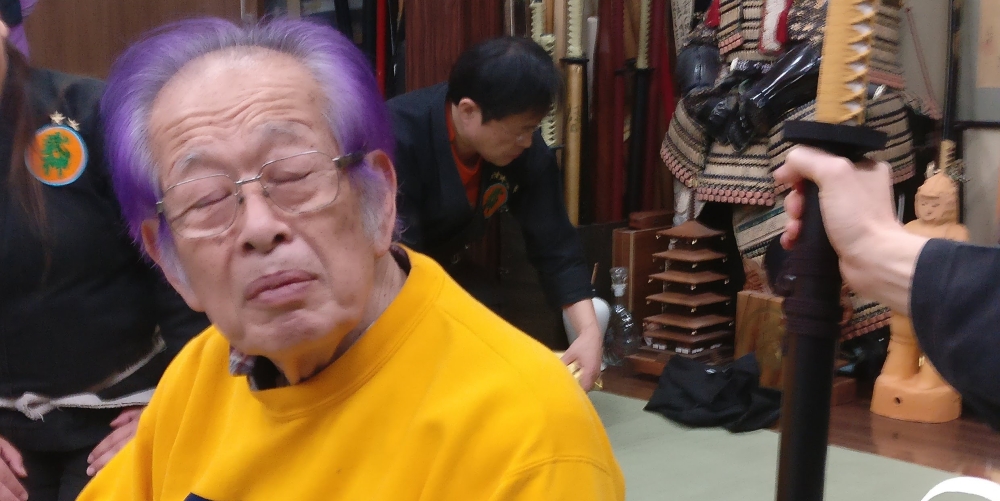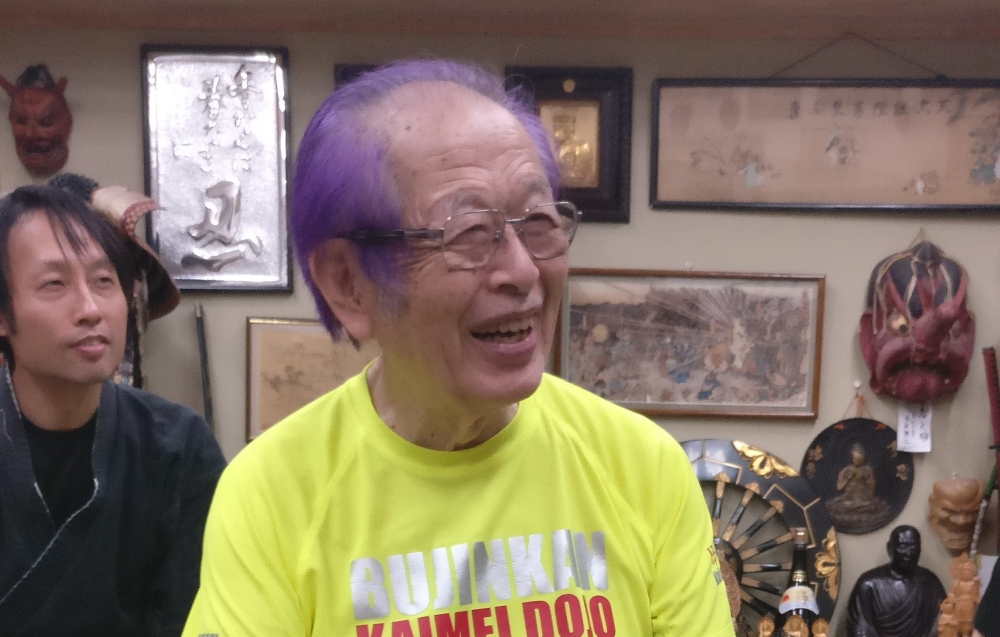From Shiro Kuma by kumafr

Noguchi sensei’s creative power is impressive! It is called “Sōzōryoku” in Japanese. Now, depending on how you write it, is (the power of) creativity (1); or (the power of) imagination. (2)
After training with him for more than 28 years, I am often surprised by his way of destructuring the Waza. This is still beyond my abilities. All the techniques we train in the dōjō are coming from the Densho.
Each class, Noguchi sensei read the technique as if it is the first time, and comes up with a new interpretation. Over the years, he has developed his own destructuring pattern. But I find the variations of these popular movements always surprising.
I guess this is due to the way the Japanese language plays with concepts and images instead of words, the way we do. By playing with the many meaning of one given set of kanji, you can come up with an infinity of interpretations.
For example, Sōzōryoku as “the power of creativity” is a mix of “genesis+create+power.” (3) (4) (5)
But when Sōzōryoku has the meaning of “power of imagination,” it is “idea+form.”
And with a Buddhist spiritual connotation, it becomes “perception+appearance.” (6) (7)
The many interpretations of the Kanji make Japanese more alive than western languages. In that respect, this is what makes Noguchi sensei’s taijutsu so playful.
Here are the definitions of the dictionary for creativity and imagination.
“Creativity refers to the phenomenon whereby a person creates something new that has some kind of value. What counts as “new” may be about the individual creator, or to the society or domain within which the novelty occurs.”
“Imagination also called the faculty of imagining, is the ability to form images and sensations when they are not perceived through sight, hearing, or other senses. Imagination helps provide meaning to experience and understanding to knowledge. It is a fundamental faculty through which people make sense of the world, and it also plays a key role in the learning process.”
Creativity adds value and imagination makes sense. Both are the sources of Mutō Dori. You can see them as two legs, to walk you need both of them. And proper walking is the secret of Mutō Dori. Through creativity and imagination, we will be able to move like Sensei does.
The way Hatsumi Sensei and the Japanese Dai Shihan move, is the result of their fantastic ability to rethink the already known. Keep in mind that they have been repeating the same Waza for more than fifty years! And still, they surprise us every class.
So, remember that, next time your students (or yourself) complain about repeating the Sanshin no kata and the Kihon Happō.
Sōzōryoku is the real training, and the correct path to develop your own taijutsu.
_____________________
1. Sōzōryoku 創造力; creative power.
2. Sōzōryoku 想像力; (the power of) imagination
3. 創 = genesis
4. 造 = create
5. 力 = power
6. 想 = conception; idea; thought . It is also “perception” for the Buddhists (Samjna)
7. 像 = image; picture; portrait , form; shape; appearance…
 This morning, I was exchanging with my friend Leandro Barros from Brazil. We were discussing ranking in the Bujinkan.
This morning, I was exchanging with my friend Leandro Barros from Brazil. We were discussing ranking in the Bujinkan. Each class with Sensei brings more depth to the understanding of “control.” We trained taijutsu, knife, hanbō, sword, bō, and yari yesterday. I can summarize it in one set of words: “Hi no Ken.” (1)
Each class with Sensei brings more depth to the understanding of “control.” We trained taijutsu, knife, hanbō, sword, bō, and yari yesterday. I can summarize it in one set of words: “Hi no Ken.” (1) During the past months, Hatsumi sensei has been insisting on not avoiding Uke’s attacks. He has been repeating it, each class since I arrived.
During the past months, Hatsumi sensei has been insisting on not avoiding Uke’s attacks. He has been repeating it, each class since I arrived.